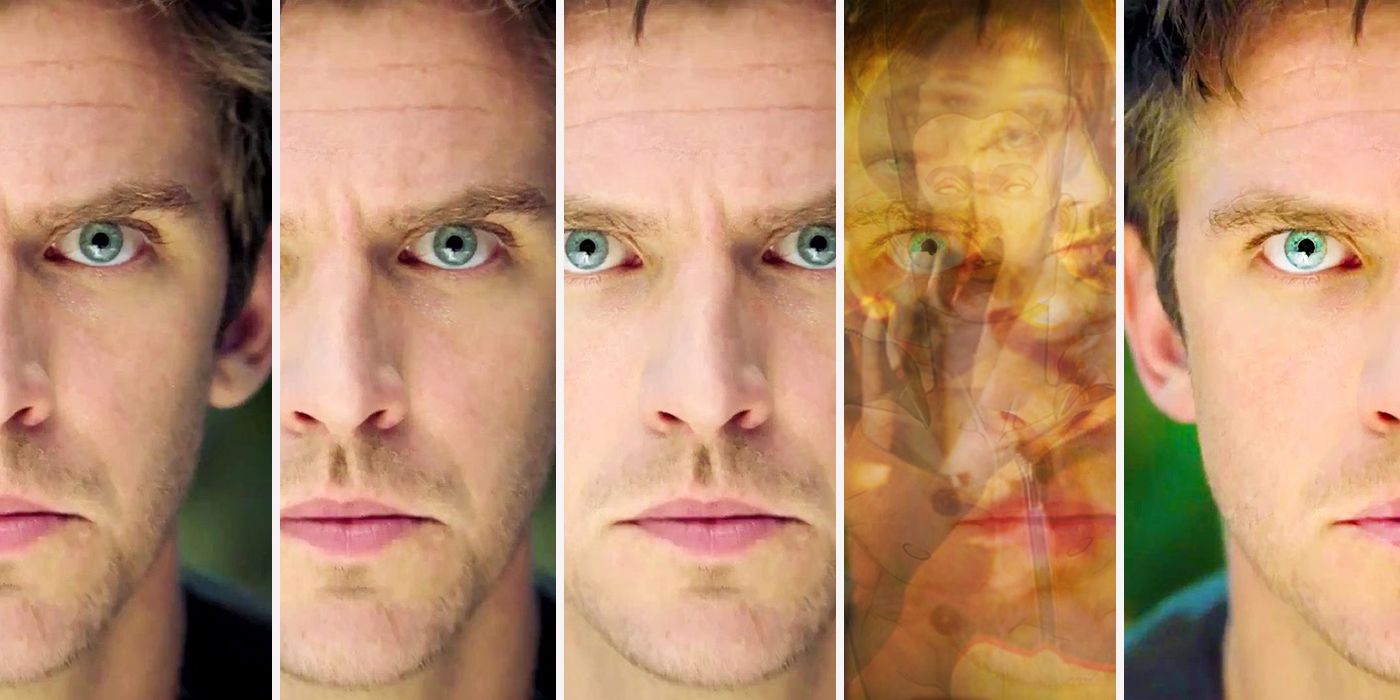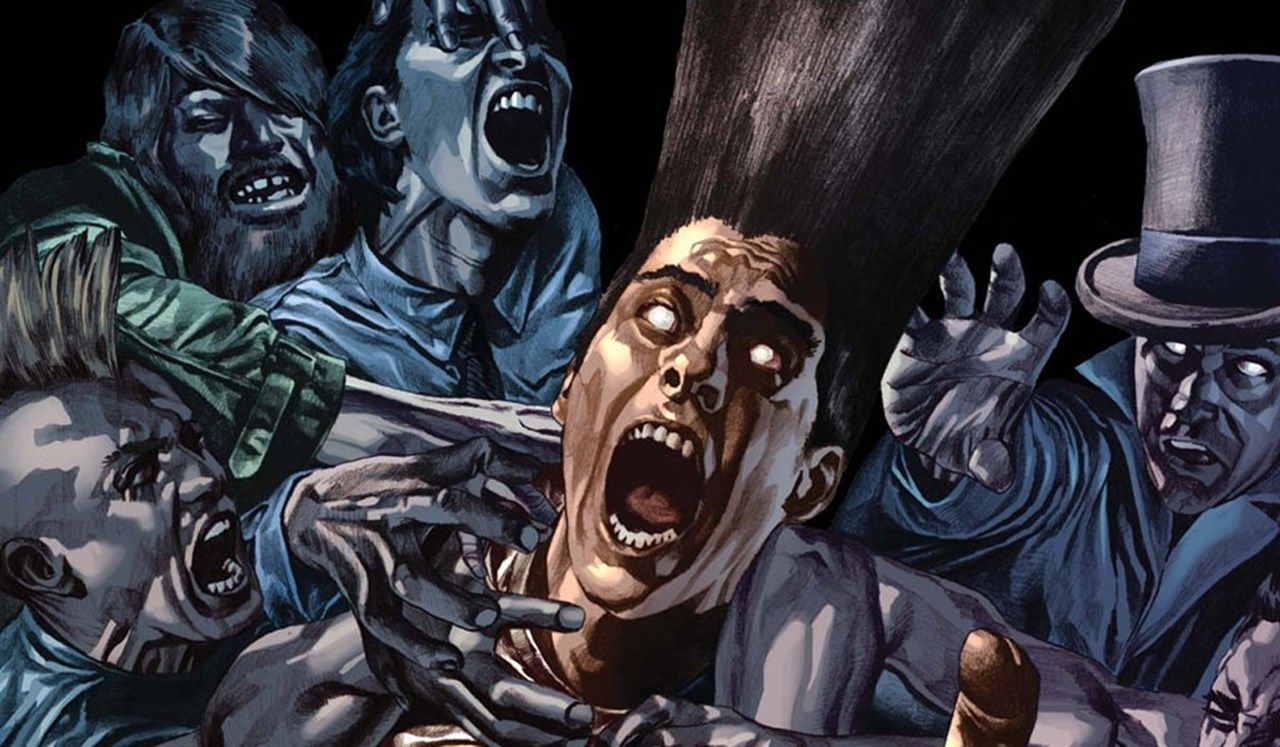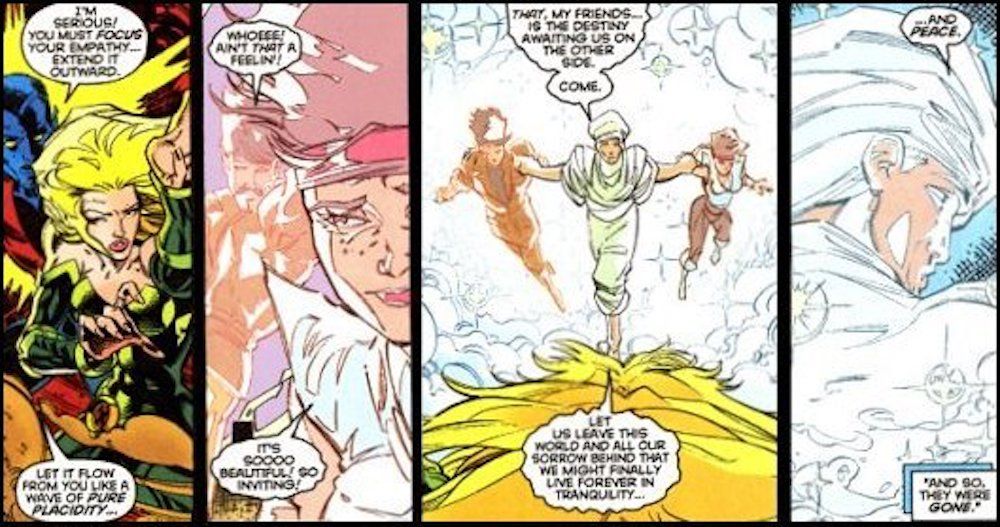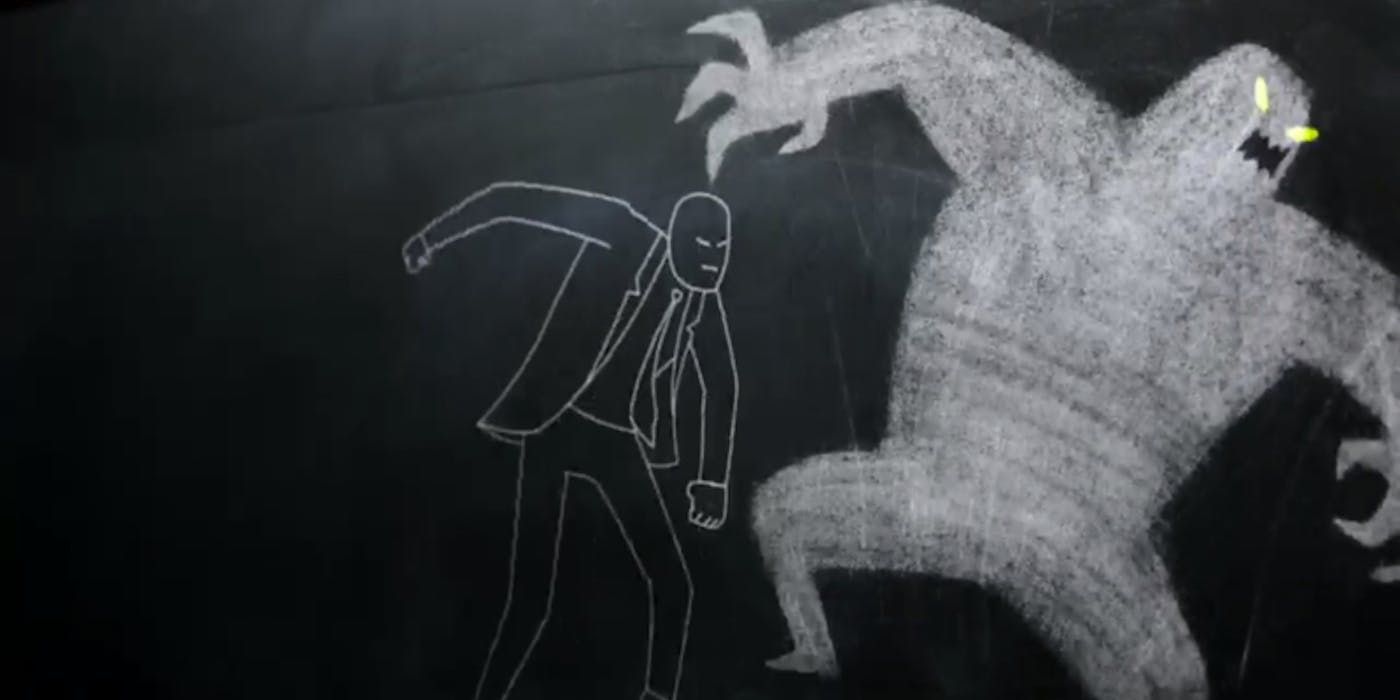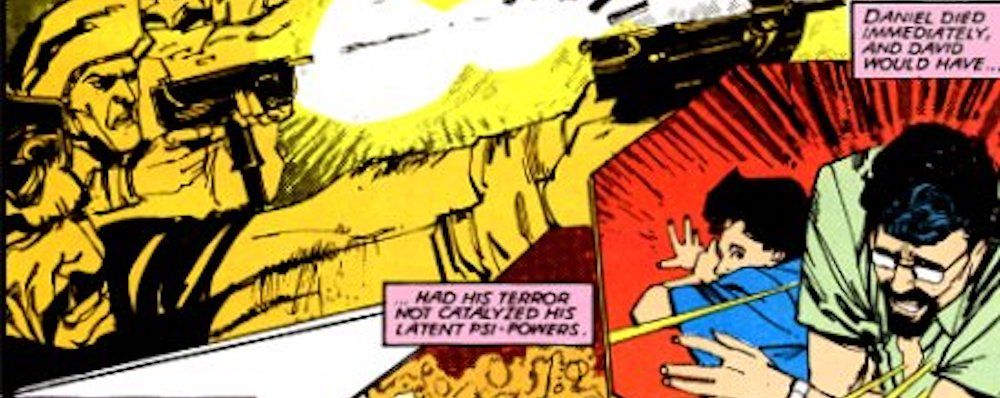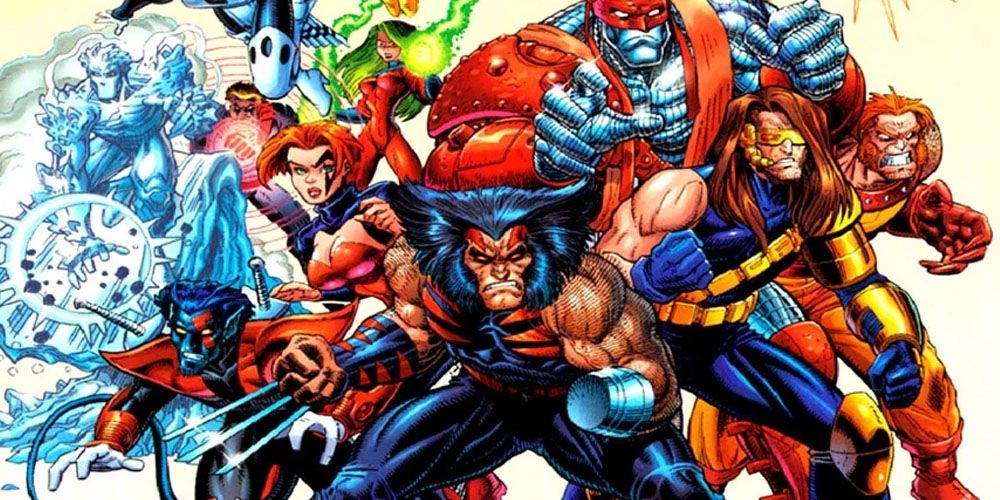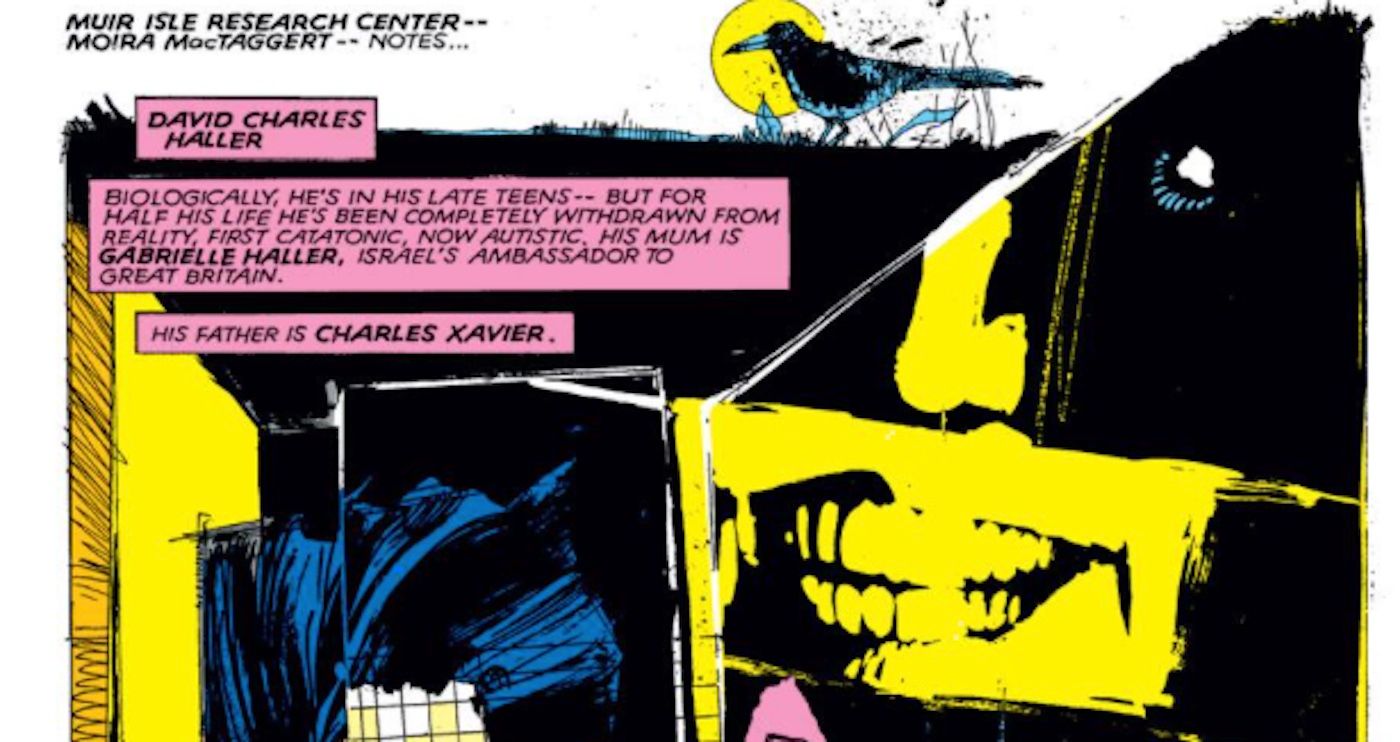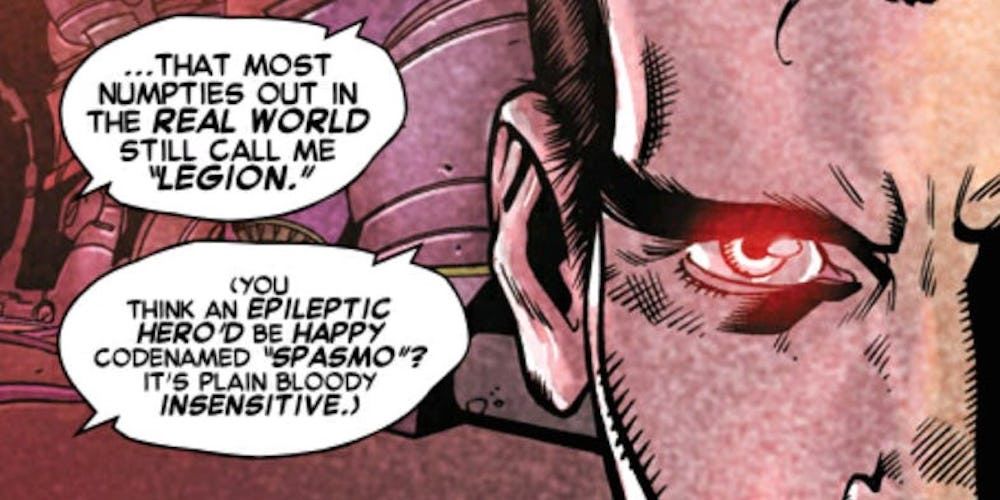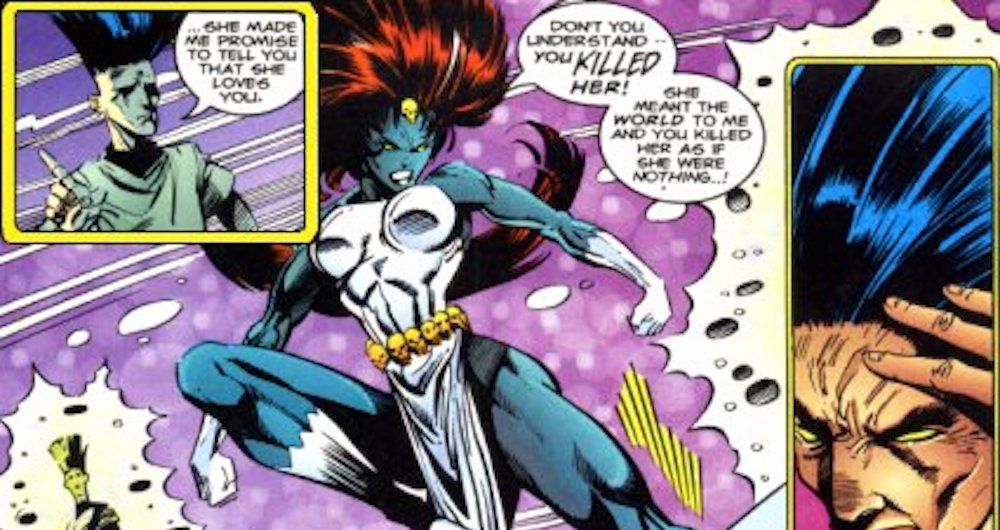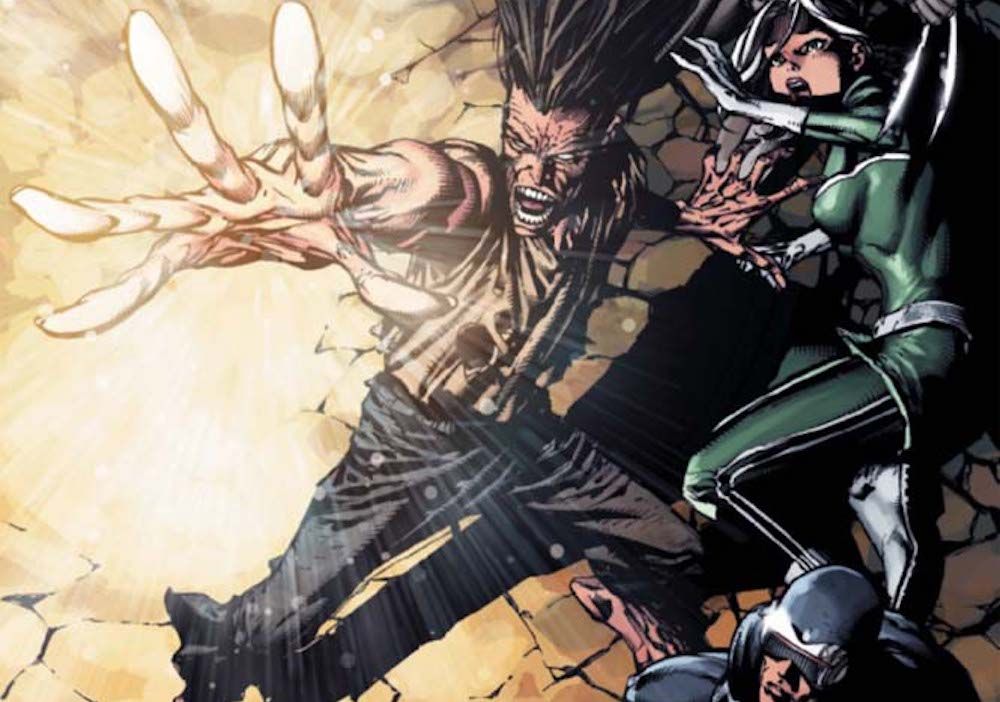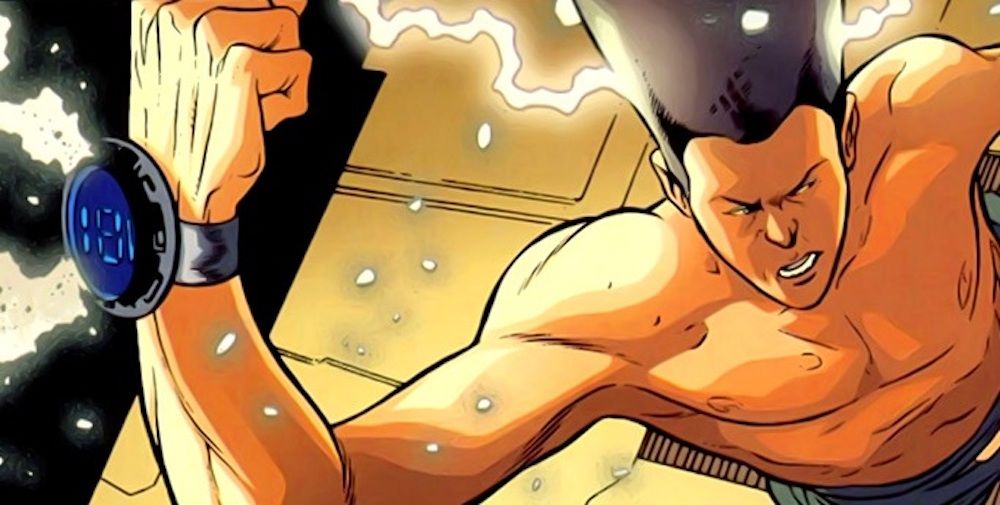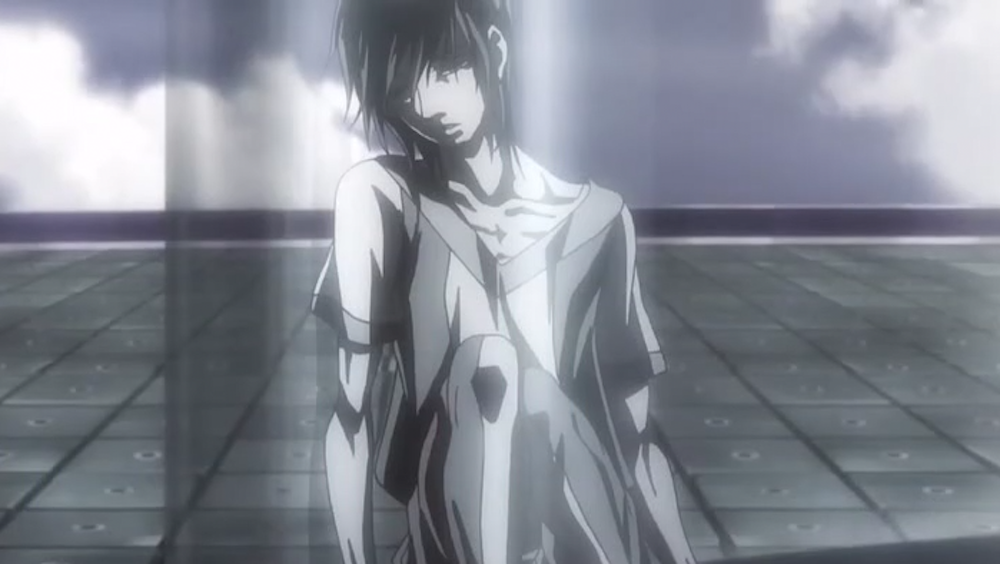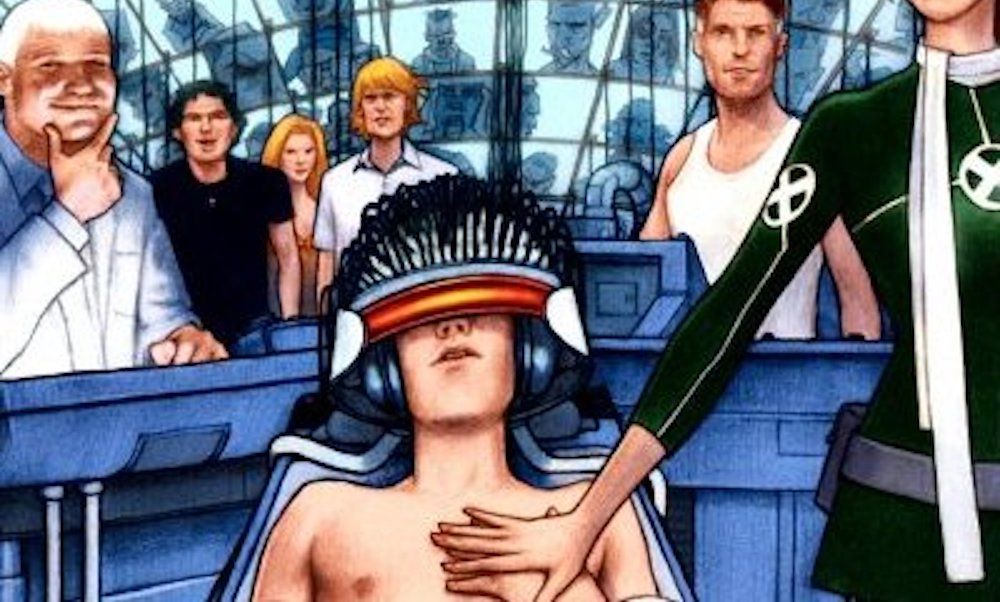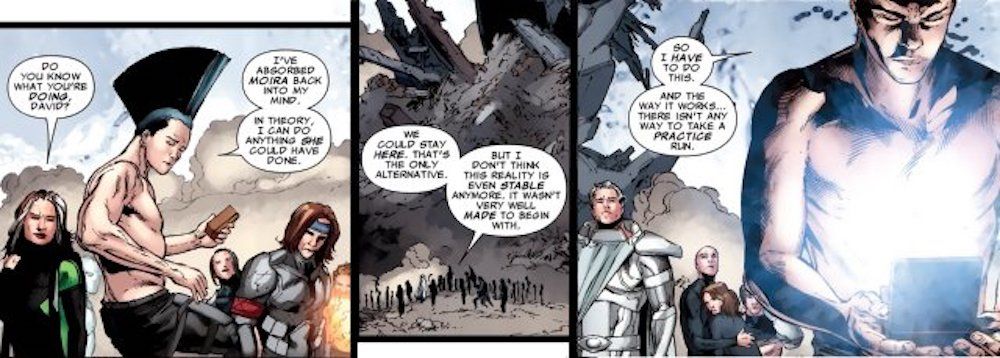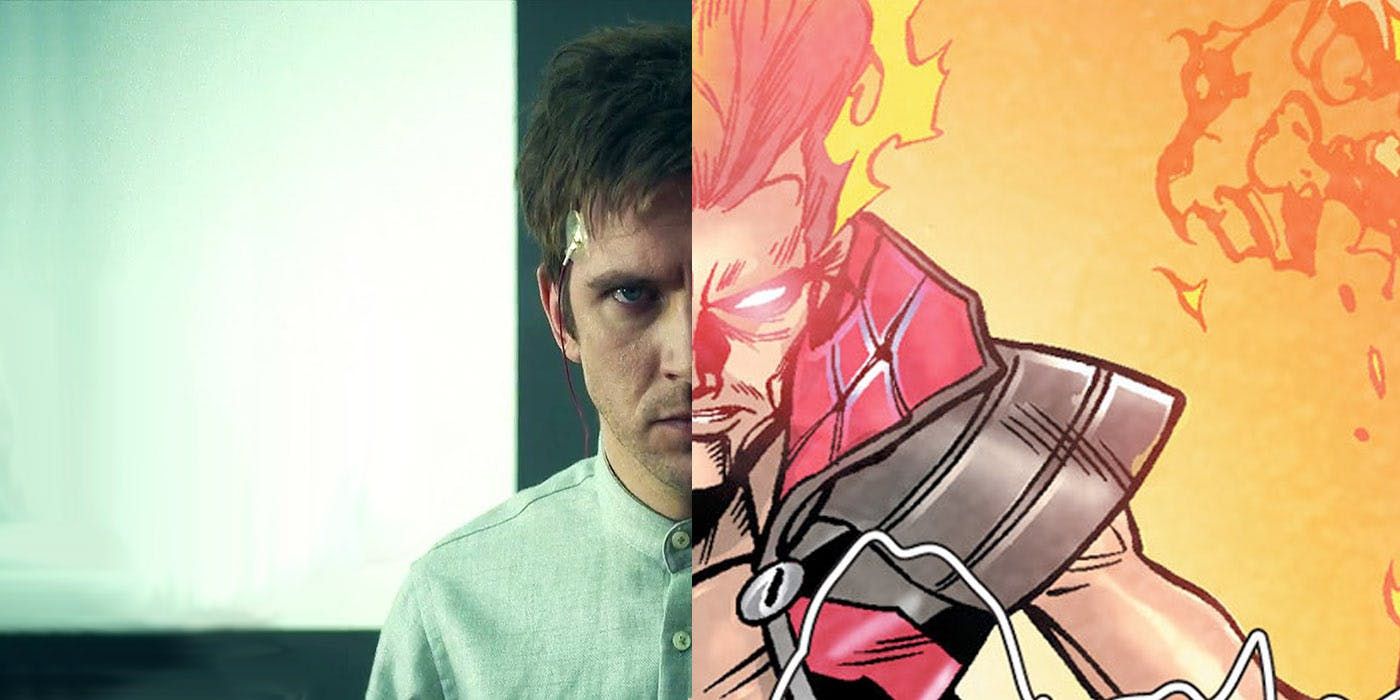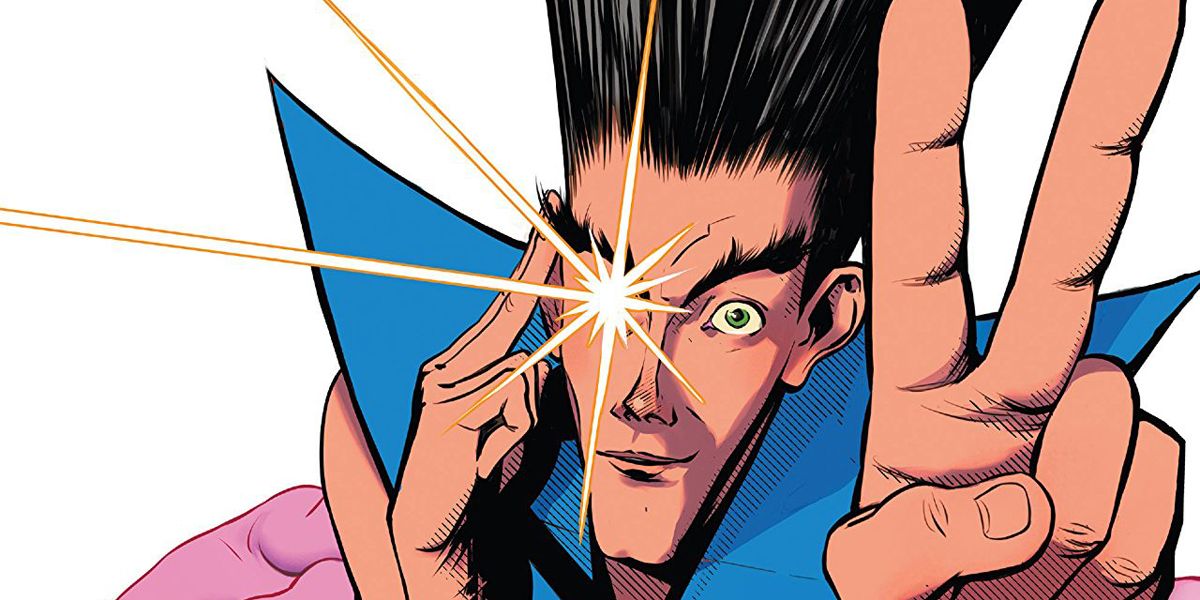FX and Noah Hawley's Legion, now in its second season, is a smashing success with both critics and fans. It's taken the world by storm like no other X-Men adaptation since... OK, this pun doesn't work because there hasn't been a movie or show about Storm yet, so forget we tried. It's unusually artistic and experimental for its genre, the weirdest prestige TV this side of Twin Peaks. Yet for all its eccentricities, the TV show is a more streamlined, accessible experience compared to the sheer volume of madness found in anti-hero David Haller's comic book history.
If you've never read New Mutants or any of the X-Men books centered on David Haller and his seemingly infinite number of alter egos, here's a primer on just some of the wildest parts of this character's biography. Many aspects of the comic book Legion's past and powers vary wildly from the TV version. With the show still in its early stages, however, there's plenty of room for it to bring in some of these elements from other versions. Even just a sliver of this comic book strangeness could fuel whole seasons of one of TV's favorite mindblowers.
SPOILERS for Legion Season 1 and the comics ahead!
15 HE HAS AT LEAST 63 KNOWN PERSONALITIES
In the first season of Legion, David Haller only really experiences one alternate "personality," The Shadow King, who lives as a parasite attacking his mind. In the comics, Haller has numerous alternate personalities, each possessing its own powers. When the different personalities take hold over him, his body transforms as well. He's on record as having at least 200 personalities with Omega-level mutant powers and thousands of less powerful ones.
As for the ones actually shown in the comics, at least 60 have been named (or at least numbered), while at least three other unnamed and unnumbered personalities' powers are known. Some of his weirdest personalities include the gas-belching pirate Personality #762, the time-manipulating dinosaur Chronodon, the energy-deflecting purple woman Non-Newtonian Annie and the telepathic Lovecraftian beast Tyrranix the Abomanoid.
14 HIS PERSONALITIES CAN MANIFEST IRL
It goes without saying that David Haller is a comic book character and not a realistic portrayal of someone with Dissociative Identity Disorder. People with DID, after all, don't physically transform when shifting between personalities (believe it or not, the M. Night Shyamalan movie Split is NOT a documentary). These personalities don't just warp David's body, however. In some cases, they actually take on bodies of their own!
While David was supposedly dead following the Age of Apocalypse storyline, Legion's first three three alternate personalities (Jack Wayne, Jamail Karami and Cyndi) became disembodied spirits whom Excalibur and Meggan had to subdue. Later, during X-Men Legacy, six more personalities (Time Sink, Chain, Susan in Sunshine, Bleeding Image, Styx and Endgame) took on physical bodies of their own!
13 PROFESSOR X IS HIS FATHER... AND ONE OF HIS PERSONALITIES
This is canon for both the comics and TV versions. It's uncertain if we'll see Professor X in the TV series due to the nebulous relationship between FOX's film and television divisions, Episode 7 confirmed that yes, Charles Xavier is still David Haller's biological father in the show. In the comics, David's feelings about his father are decidedly complicated. He didn't always get along with the X-Men and wasn't afraid to call his dad out on hypocrisy.
Professor X was killed (again, this happens a lot in the comics) by a Phoenix Force-possessed Cyclops in Avengers vs. X-Men #11. The trauma of this death caused David to develop a new personality, one writer Simon Spurrier unofficially refers to as "Professor Y." This personality, which first appears as a yellow goblin in X-Men: Legacy #1, evolves into the form of Charles Xavier as a reflection of David's emotional stress.
12 HE'S THE SOLE SURVIVOR OF A TERRORIST ATTACK
Professor X was unaware he'd sired David Haller. As such, David was raised by his mother Gabrielle Haller and his stepfather Daniel Shomron. The family moved all over the place due to Gabrielle's diplomatic work. David was born in Israel, his mother and stepfather's home country, but spent significant portions of his childhood in the United Kingdom and France. He was in France when tragedy struck.
A group of terrorists trying to take down all Israelis they could find pulled off an attack in France. Daniel Shomron was one of the victims. Witnessing this attack activated David's psionic powers. He incinerated the terrorists and drew their leader, Jemail Karami, into his own brain. Jemail was David's first alternate personality. The trauma of this experience put David in a catatonic state for his teenage years.
11 HE CAN TRAVEL THROUGH TIME... AND CREATED A DYSTOPIA
Among David Haller's Omega-level powers, the most extreme and dangerous might be his ability to travel through time and change reality itself. A throwaway line about "time travel class" in the Legion TV series hints this might play into the show as well. As anyone with a passing familiarity with time travel stories might expect, his attempts to fix the past end up making things even worse. Most infamously, his plan to kill Magneto in X-Men #41 was a full-blown disaster.
The plan was to go back in time 20 years to eliminate Magneto before his rise as a supervillain. The plan seriously backfired: he blew open the existence of mutants too early, accidentally killed Professor X instead and caused the alternate timeline called the Age of Apocalypse! Bishop from this new dystopian timeline had to fix things up by travelling back in time to stop David, presumably killing him.
10 HE HAS CONFLICTING DIAGNOSES
The writing of David Haller over the years unfortunately betrays a lot of ignorance on mental health issues from a variety of comic writers. In his first appearance in New Mutants #25, he's described as autistic, yet he shows almost no signs of autism. Many writers over the years also describe him as schizophrenic, but this would appear to be due to common confusion about the difference between schizophrenia and Dissociative Identity Disorder (aka Multiple Personality Disorder).
Interestingly, the TV show emphasizes the schizophrenic description while also making his symptoms resemble schizophrenia more. TV David is not schizophrenic, merely appearing to be so due to the influence of the Shadow King, but the Shadow King's presence in David's life for the most part is closer to a schizophrenia-style hallucination rather than a DID-style alternate persona.
9 HE HATES HIS CODENAME
The codename Legion has two meanings. It's obviously a reference to David's "legion" of alternate personalities. It's also a reference to a man possessed by demons in the New Testament who tells Jesus "My name is Legion, for we are many." David's understandably not a big fan of either meaning.
As you can see from the dialogue pictured above, David finds the codename kind of offensive and insensitive to his condition. This just one of his many comebacks to people calling him "Legion." The name is blatantly ableist, both defining and demonizing him based on his Dissociative Identity Disorder. It is also kind of ironic and awkward to give a Jewish character a name referencing a demon from Christianity. Nevertheless, the codename has stuck, and David's learned to live with it.
8 MYSTIQUE TRIED TO OFF HIM WHILE IN A "COMA"
During the time the Shadow King possessed David Haller, he killed the precog mutant Destiny. Destiny was a "close friend" of Mystique, to say the least. Though Marvel didn't allow openly queer characters at the time, Chris Claremont specifically wrote and envisioned Mystique and Destiny as lovers. Needless to say, this enraged Mystique, and she set off for revenge.
Of course, the X-Men and X-Factor had already defeated the Shadow King, so Mystique's actual target was taken care of. Instead, she set out for revenge against David himself, plotting to kill him while he was supposedly in a coma. David was only faking his coma, however, conscious and sending telepathic messages to his father. When Mystique came to kill him in X-Factor #108, he quit the act and broke from the "coma," blasting her away.
7 RELUCTANTLY ACCEPTED BY THE X-MEN
Historically, the X-Men haven't trusted David, and he hasn't trusted them back. To the X-Men, David is uncontrollable, too powerful with too many "evil" personalities capable of using such power for their own ends. To David, the X-Men are one of his dad's bad ideas, training young people into a glorified army while claiming to be about peace, and only reacting to conflicts rather than stopping them.
Despite all their differences, David and the X-Men have joined forces to face off against common enemies. While Professor X was reluctant to bring his son into the team, at Cyclops' insistence, David joined the X-Men team in their battle against Bastion's Nimrod Sentinels. His powers, however risky and dangerous, proved to be necessary for their victory.
6 HIS WRISTBAND MANAGES HIS PERSONALITIES
David Haller's most overall successful form of treatment is in the form of the Neural Switchboard Wristband. While attempts to kill his other personalities have been mostly disastrous, the Neural Switchboard Wristband gives Haller the ability to control them and utilize their powers without being overpowered himself. The invention is the result of a collaboration between three of the Marvel universe's top tech whizes: Doctor Nemesis, Madison Jeffries and Reed Richards.
The device works through numerical inputs, which stimulate cells in David's thalamus and neocortex, providing a one-way link to all of his personalities. Of course, the Neural Switchboard Wristband isn't without its faults: in X-Men Aftermath #249, just one issue after David first gets the Wristband, it turns out several of his personalities have become corporeal and gone loose.
5 ANIME LEGION CAUSES DISEASE
Even when David Haller isn't a character in a given story, he's still somehow responsible for causing serious problems. David does not appear in Marvel Anime: X-Men (this in spite of having one of the most "anime" hairstyles in the Marvel universe). Yet he is mentioned, and when he's mentioned, of course it's as the cause of a problem.
The problem, to be specific, is "Damon-Hall Syndrome." This disease essentially turns other mutants into other versions of Legion, prompting secondary mutations, multiple personalities and psychosis. In the comics it's theorized and hinted at that David can cause secondary mutations in others, but it's made explicit in the anime. The main villain of the series is yet another reality-warping child of Professor X named Takeo Sasaki (pictured above), who bears some resemblance to David.
4 A DISASTROUS "CURE" ATTEMPT
When dealing with a disability that is also a superpower, trying to find a "cure" probably isn't the best way to deal with it. In David Haller's case, the search for a cure backfired immensely. If anyone was going to pull it off, Doctor Nemesis seemed capable. The doctor's intelligence and abilities allow him to alter patients on the genetic level, and that's the level of intense treatment needed to cure David of his DID.
Doctor Nemesis seemingly got off to a successful start, eliminating David's alternate personalities one by one with no visible consequences at first. However, the ongoing process of the "cure" ended up creating a new and extremely powerful personality, assuming the appearance of David's former doctor, Moira MacTaggert. This new personality was defensive, protecting David's many personalities from being eliminated.
3 HE CREATED A NEW UNIVERSE... UNSUCCESSFULLY
The new Moira personality created a whole new universe in the Age of X event series. In this world, all of the various Legion personalities had bodies of their own and David Haller, while retaining his telekinetic abilities, was free from psychological distress. In this world, everyone recognized David as the hero he wanted to be. It was seemingly ideal. It was also extremely unstable and based upon illusions.
In this universe, Moira was propping up David at the expense of other mutants, who were walled off from the rest of the world. Legacy, this universe's version of Rogue, discovered the truth of what was going on and freed her fellow mutants. She managed to convince David to absorb Moira and return their reality to its normal state.
2 HE ERASED HIMSELF FROM EXISTENCE... UNSUCCESSFULLY
David had temporarily disappeared from existence before due to the time paradox caused by the Age of Apocalypse storyline. In the final issue of X-Men Legacy, he does the deed himself. His powers had been escalating and spiralling out of control, to the point he was a threat to all mutantkind. Far too powerful to actually die, David instead used his reality warping abilities to erase himself from existence.
Many considered this a fitting conclusion to his intense story arc, even if it was inevitably going to be undone in a few years. Yet even before his official return to the Marvel universe, his erasure seemed incomplete. Either intentionally hinting at David's failure or perhaps being a failure of the writers to keep track of the different plot threads, characters in multiple comics still remembered David despite being in a timeline where he supposedly never existed.
1 HE'S BACK FROM THE DEAD
Of course, no superhero stays gone forever, much less one who's become more popular than ever before thanks to a hit TV show. So of course, Marvel Comics launched a new Legion comics series in 2018 written by Peter Milligan and illustrated by Wilfredo Torres, effectively undoing the ending of X-Men Legacy.
This new series focuses on a new personality known as "Lord Trauma," who is presumably responsible for undoing David's erasure from existence and is trying to steal all of David's powers for himself. The first few issues received mixed reviews for being a more down-to-Earth straightforward take on a character generally defined by wild creative insanity, but the series is still ongoing and it remains to be seen just what it means for the character's development.

